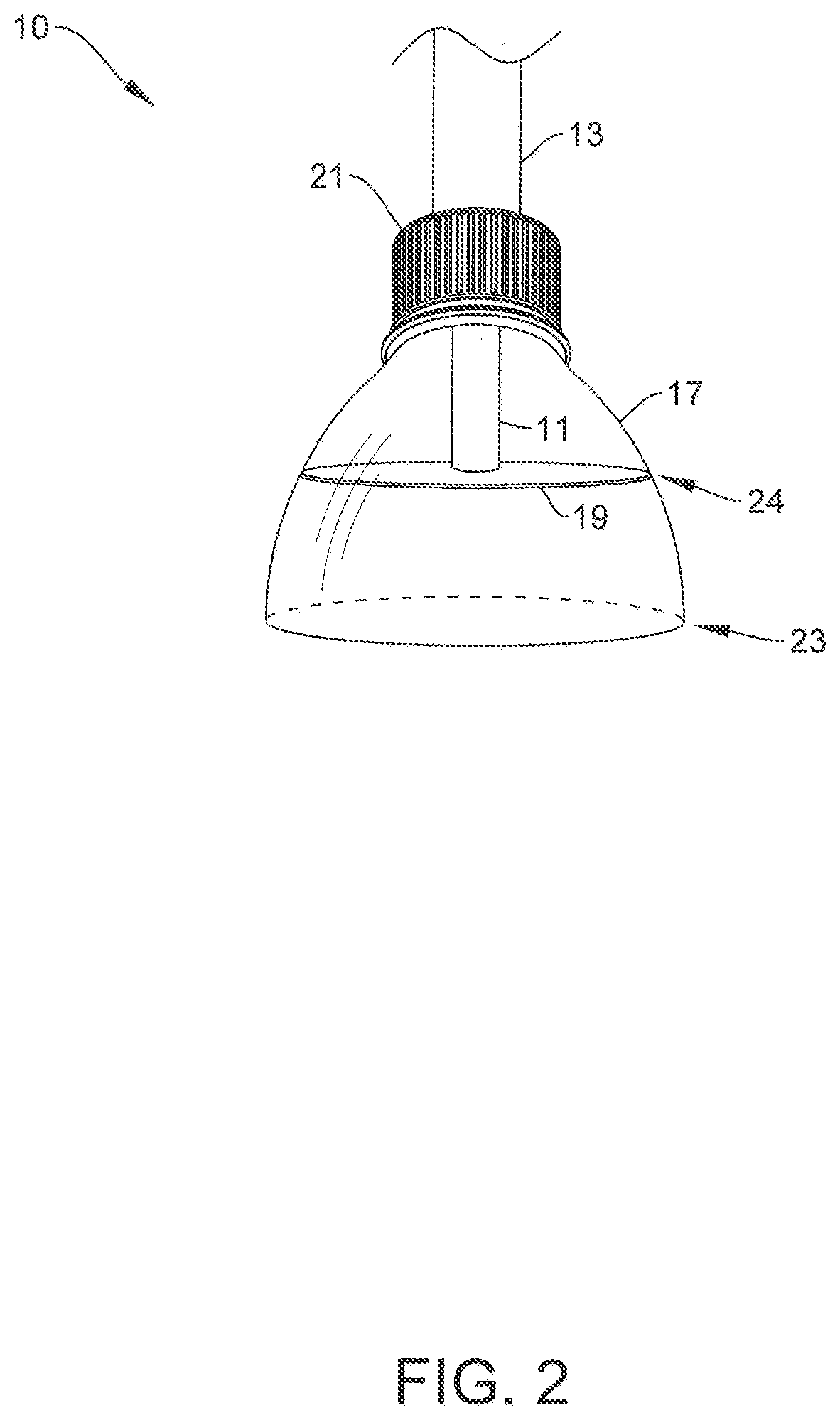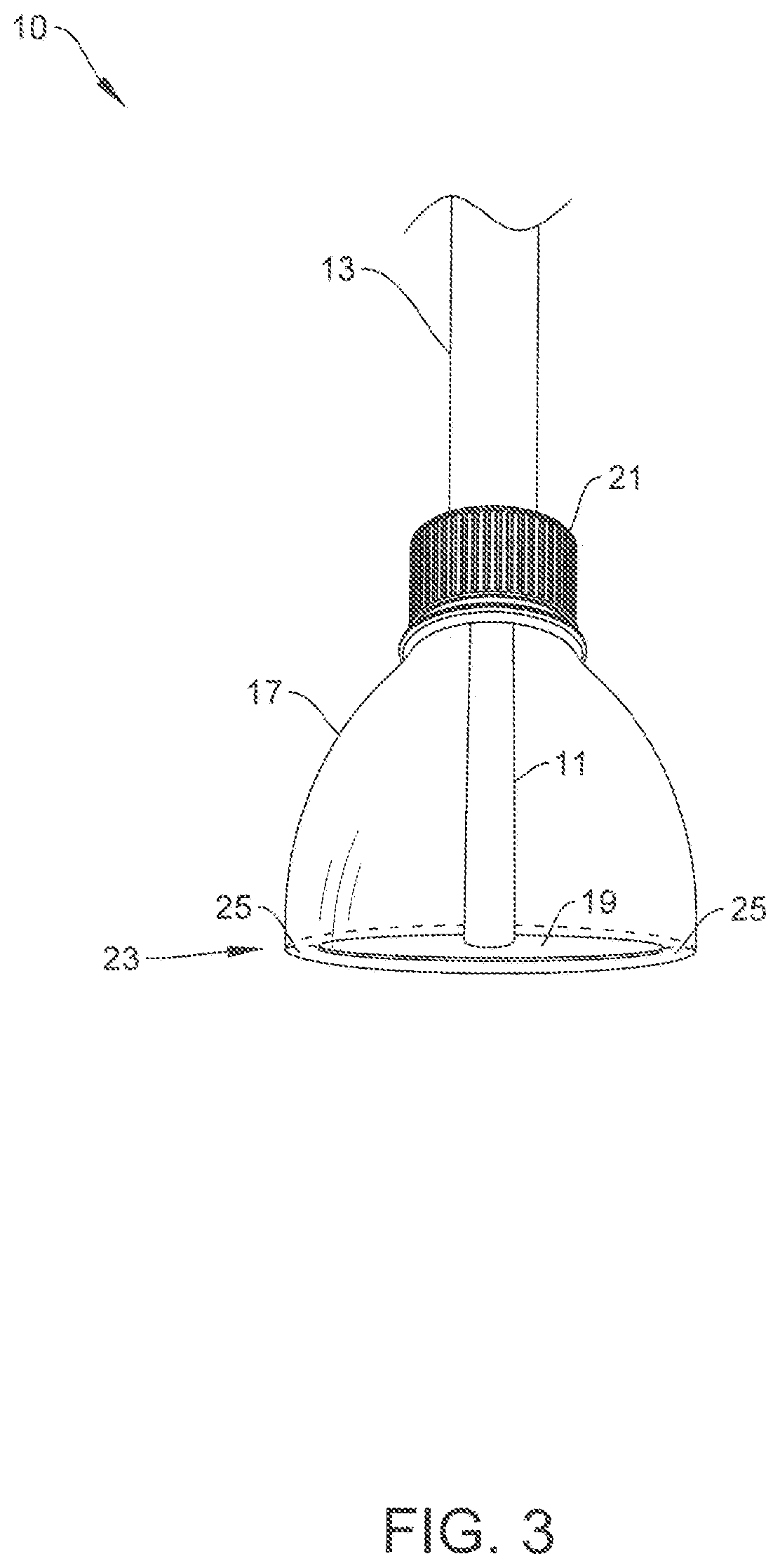Poleborne Thrustable Arthropod Trap
a technology of arthropod traps and poles, which is applied in the field of manually operated arthropod traps and poleborne arthropod traps, can solve the problems of not being able to meet the needs of trapping all manner of arthropods, not being desirable, and foregoing solutions being malevolent, etc., and achieves the effect of light weight and inexpensive, and few components
- Summary
- Abstract
- Description
- Claims
- Application Information
AI Technical Summary
Benefits of technology
Problems solved by technology
Method used
Image
Examples
Embodiment Construction
[0021]The present invention provides a solution for trapping or killing an arthropod from a safe distance. Ideally, the invention can be used to remove insects or spiders from ceilings and walls. An apparatus according to the invention is relatively lightweight and inexpensive, with few component parts, and is designed to be manually operated.
[0022]FIG. 1 shows a perspective view of one embodiment according to the invention of a poleborne thrustable arthropod trap 10. The trap 10 is an assembly that includes a pole or rod 11, a tube 13, a handle stop 15, a receptacle 17, a disk 19, and a connector 21. The pole 11 extends through the interior hollow channel of the tube 13. The handle stop 15 is attached to a proximal end of the pole 11 and has two main functions. Handle stop 15 provides a handle or gripping surface for a user handling the trap, and handle stop 15 limits distal extension of the pole 11 through the tube 13. In one embodiment, handle stop 15 is a generally cylindrical m...
PUM
 Login to View More
Login to View More Abstract
Description
Claims
Application Information
 Login to View More
Login to View More - R&D
- Intellectual Property
- Life Sciences
- Materials
- Tech Scout
- Unparalleled Data Quality
- Higher Quality Content
- 60% Fewer Hallucinations
Browse by: Latest US Patents, China's latest patents, Technical Efficacy Thesaurus, Application Domain, Technology Topic, Popular Technical Reports.
© 2025 PatSnap. All rights reserved.Legal|Privacy policy|Modern Slavery Act Transparency Statement|Sitemap|About US| Contact US: help@patsnap.com



